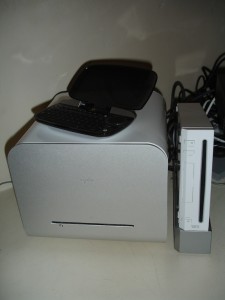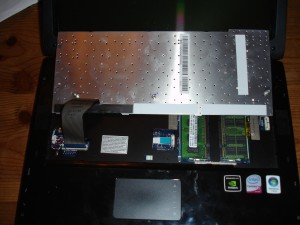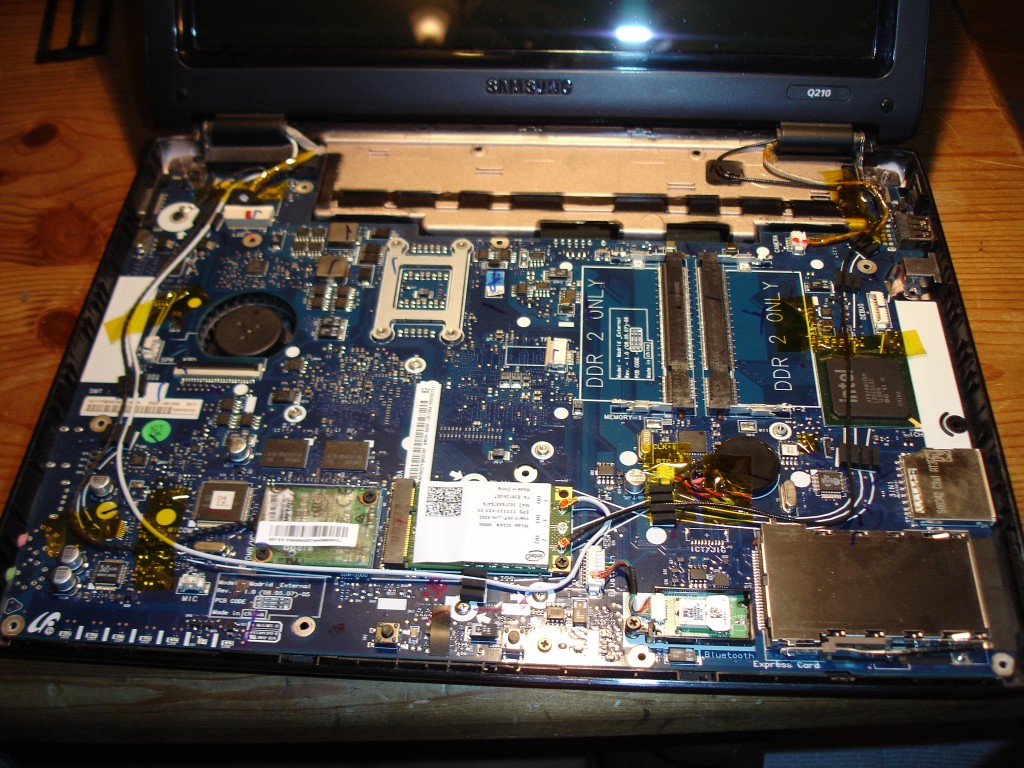I have a new computer! My time has come to get a dedicated Home Theater PC (HTPC), to connect to my Sony 37″ 1080p LCD TV. I spent several weeks researching, as I was quite specific with my requirements.
- Must be quiet
- Should look good in the living room
- Needs to have a good range of video/audio outputs
- 1080p (full HD) video shouldn’t pose a problem
With the above in mind, my first stop was check out the usual suspects. First, I considered the wonderfully designed Apple TV and Apple Mac mini. These are massively expensive, and really don’t offer that much in terms of performance or features. The Apple TV dies with it’s lack of optical drive, while the Mac mini is low spec and doesn’t have HDMI output. Next up, was the Dell Inspiron Zino HD. Again, this box looks brilliant, but the hardware specs aren’t great given it’s price. The glaring omission is the lack of multi-channel audio output, so no surround sound here!
At this point I decided to start looking at the range of Mini-ITX motherboards on the market, with the aim to building my own machine. Mini-ITX are tiny PCs, which are 17cm square in size. Very quickly I came to the conclusion that I would need a dual core Intel Atom N330 and an nVidia ION chipset. The other options on the Mini-ITX format are either too low performance or have too many fans so are pretty loud. I settled on the following:
- Zotac ION-ITX-A motherboard, including the Atom N330 and nVidia ION chipset
- Nexus Psile case, including a slot-load DVD-RW drive (i’ll replace this with a Blu-ray drive when prices drop)
- 2GB of Crucial RAM (single DIMM, so it’s easy to upgrade to 4GB later)
- 640GB Western Digital Caviar Green SATA 2.0 Hard Disk
- Logitech diNovo Mini palmtop wireless keyboard/mouse
Assembly of the above was a breeze, with one exception. The SATA cable supplied for the slimline DVD drive doesn’t fit in the case. The back of the drive is too close to the edge of the case, but thankfully I have a pile of them and found one that fit.
Upon first boot (connected via HDMI to my TV), everything worked fine. I booted and installed Windows 7 Ultimate, and then started to test a few videos out. At first the results were poor, with many videos not playing smoothly. I quickly discovered that the CPU was pegging at 100%, causing all the issues. Video’s were being decoded by the CPU, rather than taking advantage of nVidia’s CUDA technology. I installed CoreAVC and almost everything is fine, with videos playing at 1080p without trouble. Cue BBC iPlayer problems.
Adobe Flash 10.0 (the current version) also uses the CPU to decode video, however the upcoming Flash 10.1 will fix this. You can download this from Adobe Labs to test for yourself. It’s not very stable at the moment, but does work.
Finally, I wanted to get a nicer interface than just vanilla Windows Media Center. As I am used to it, I have decided to go with XBMC using the Aeon skin. Now it’s all up and running and works perfectly!



